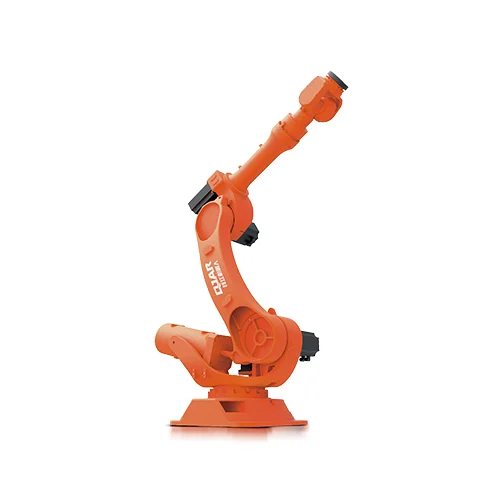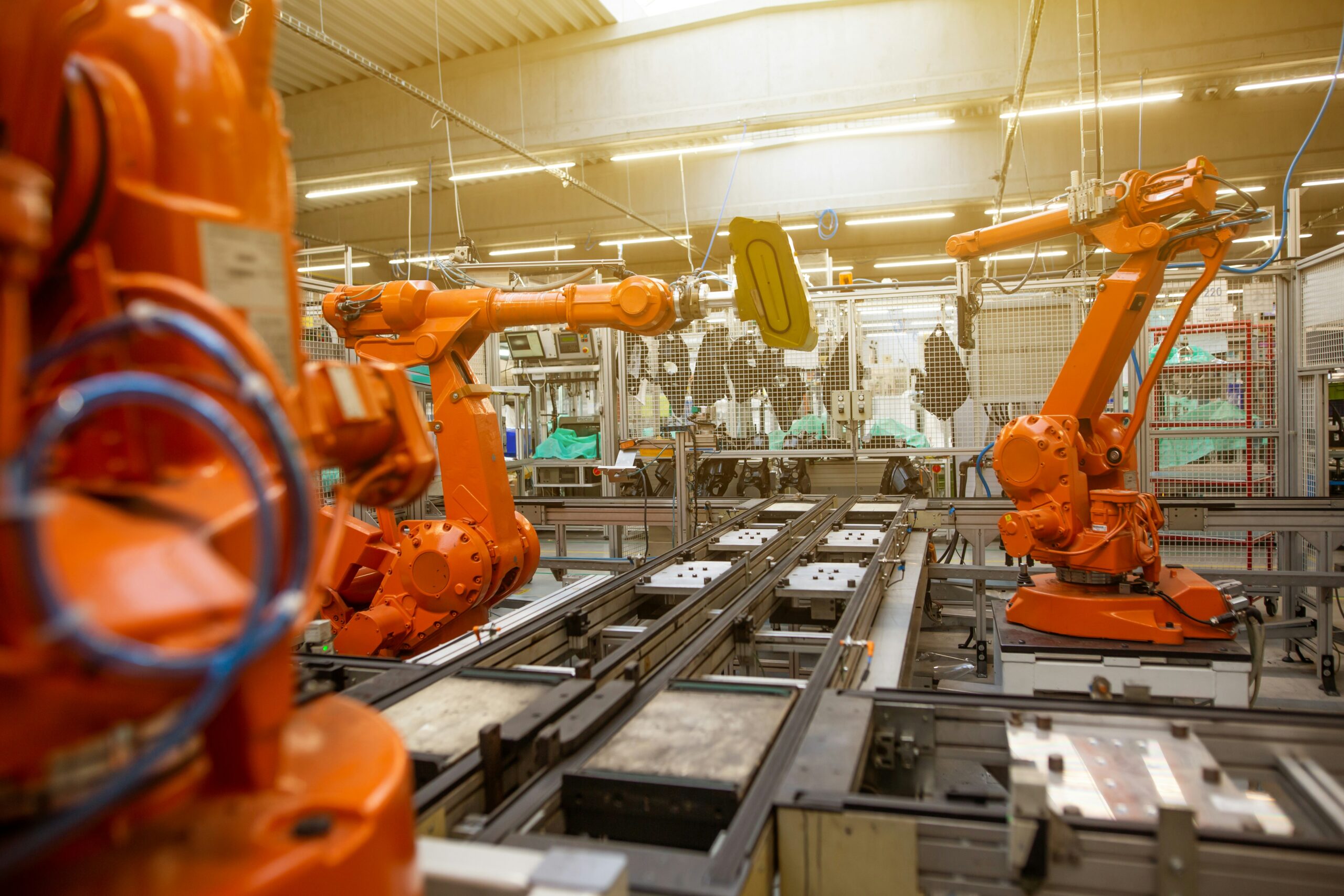Modern robotics in manufacturing has seen a dramatic shift with the introduction of robotics, moving from labor-intensive, traditional procedures to an automated era that promises efficiency and accuracy as well as a revolution in the creation, finishing, and marketing of goods. Polishing robots have become important actors in the wide range of robotic applications, making sure that surfaces fulfill the stringent requirements needed in today’s competitive environment. This paper explores the function of polishing robots, concentrating on the QJR210-1 robotic arm—a shining example of innovation in this domain.
The Development of Robotic Manufacturing
Transitioning from Manual to Automated
The story of manufacturing’s transition from manual labor to automation is one of constant pursuit of quality and efficiency. At first, manual procedures were labor-intensive and prone to mistakes, which resulted in uneven product quality. The first step in overcoming these obstacles was the introduction of automation, which also laid the foundation for the ensuing robotics revolution.
Polishing Robots’ Ascent
As robotics technology advanced, certain uses—like polishing robots—became more prominent. These sophisticated finishing task-performing robots have become essential in areas where surface finish quality is critical. Polishing robots are capable of significantly higher degrees of consistency and perfection than humans since they are outfitted with sophisticated control systems and precise instruments.
Highlights of the QJR210-1 Robotic Arm’s Features and Design
The QJR210-1 robotic arm, with its incredibly small size that maintains both workspace and speed, is a monument to the progress made in robotics technology. It is appropriate for a variety of tasks beyond polishing, including as welding, palletizing, and assembling, due to its high repeat placement precision. The adaptability of the robotic arm is a huge benefit for producers looking to improve productivity and quality in various robotics in manufacturing processes.

Technical Details
The QJR210-1 is notable for its strength and reach, boasting an arm span of 2688mm and a payload capacity of 210kg. Its remarkable mobility, made possible by its six axes of motion and high-speed capabilities, guarantees that even the most intricate polishing chores are executed precisely. The arm’s repeat positioning accuracy of ±0.2mm is very important for operations that need the highest level of precision, demonstrating its dependability in demanding robotics in manufacturing settings.
Benefits of Manufacturing
For manufacturers, the QJR210-1 robotic arm’s technological prowess yields real advantages. Its capacity to continuously operate within narrow tolerances guarantees that goods fulfill exacting quality requirements, cutting down on waste and rework. Its broad reach and high payload also make it the perfect tool for handling bulky or heavy objects, simplifying tasks like polishing and loading, unloading, and assembly.
Case Studies of Polishing Robots in Operation
Overview of the Case Study
Let’s look at a case study that focuses on the employment of these robots for weld seam grinding in the manufacture of new energy tray racks to show how polishing robots affect robotics in manufacturing. The advantages of using polishing robots in industrial processes are demonstrated by this example.
Fresh Energy Tray Rack Grinding of the Weld Seam
In order to assure the final product’s structural integrity and visual quality, polishing robots were used in this case study to grind the weld seams on tray racks. The task comprised cleaning the weld seams following resistance and carbon dioxide gas shielded welding, with workpieces up to L1500×W1500×H400mm in maximum size. The polishing robots, working on a site measuring L6000×W6000×H4000mm and under varying temperature conditions without the requirement for a heating facility, achieved an impressive grinding efficiency of ≤30s/piece.
Examining the Outcomes
The case study’s findings demonstrate the effectiveness and versatility of polishing robots in a robotics in manufacturing environment. The robustness and dependability of these robotic systems are demonstrated by their capacity to operate at high productivity levels for up to 20 hours per day in a variety of temperature environments. Moreover, the noteworthy decrease in the processing duration per component emphasizes the function of polishing robots in augmenting operational effectiveness.
Trends and Innovations in the Future of Polishing Robots in Manufacturing
The development of robotics and artificial intelligence (AI) is closely linked to the use of polishing robots in production in the future. As AI develops, we should anticipate seeing an increase in autonomous polishing robots that can adapt in real-time to optimize accuracy and efficiency. These robots will be able to learn from every work thanks to machine learning algorithms, which will eventually increase their performance and ability to adapt to new obstacles.

The Growing Significance of Robots
It is anticipated that the use of polishing robots will spread into new industries as technology advances. Apart from their customary functions in the robotics in manufacturing of automobiles and aerospace, these robots are poised to revolutionize sectors like furniture manufacturing, where the level of finish is crucial, and even the rapidly developing field of medical implants, where their accuracy can aid in the creation of more dependable and safer products.
Possibilities and Difficulties
The use of polishing robots in manufacturing has its difficulties, despite their bright future. For some manufacturers, the initial cost and complexity of incorporating these devices into current manufacturing lines might be major obstacles. On the other hand, these difficulties offer chances for creativity in the development and application of robotic systems. These obstacles might be reduced by more user-friendly interfaces, modular designs, and improved interoperability with current machinery, opening up the advantages of polishing robots to a wider range of manufacturers.
In summary
A Synopsis of Polishing Robots’ Effects
With their unparalleled efficiency, accuracy, and consistency, polishing robots have become indispensable in today’s manufacturing environment. They are the epitome of the modern production processes’ automation trend and never-ending pursuit of excellence. The extraordinary capabilities of these machines are best demonstrated by the QJR210-1 robotic arm, which shows how technical breakthroughs may push the boundaries of what is feasible while addressing a variety of robotics in manufacturing needs.

How Important QJR210-1 Is
More than just a tool, the QJR210-1 robotic arm represents the manufacturing industry’s future, one in which accuracy, efficiency, and adaptability are critical. This robotic arm is an amazing example of how polishing robots may revolutionize industrial processes by enhancing their efficiency, adaptability, and ability to fulfill the ever-growing expectations for quality.
In conclusion, it is evident that polishing robots‘ function in contemporary production will only become more important as we continue to shed light on their effectiveness and potential. Leading-edge innovations such as the QJR210-1 robotic arm demonstrate that, with the appropriate technology, there are practically infinite opportunities to improve industrial productivity and product quality. These robotic systems hold the key to the future of manufacturing, and as technology develops, polishing robots will become more capable and useful, ushering in a new era of superior manufacturing.
